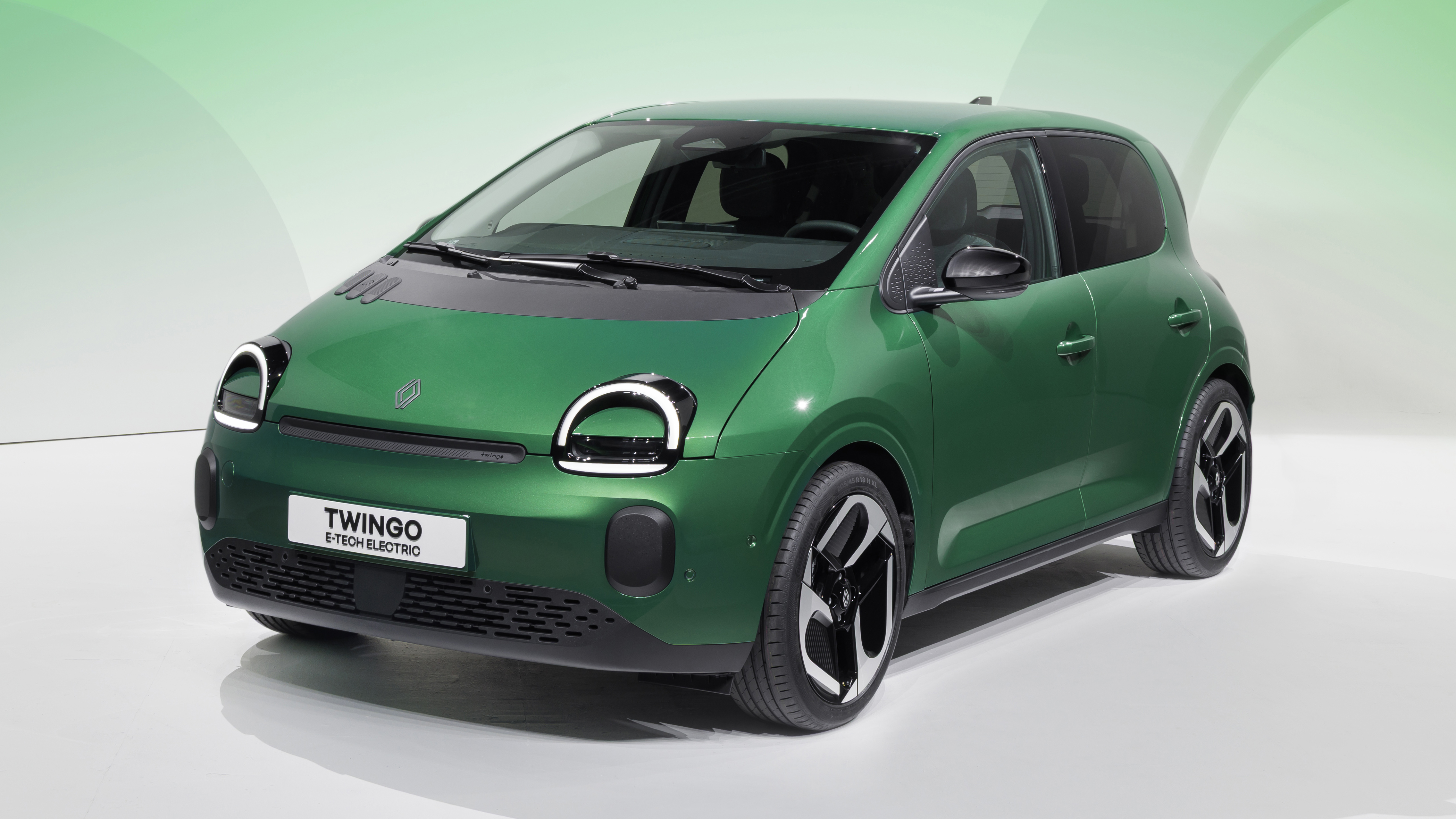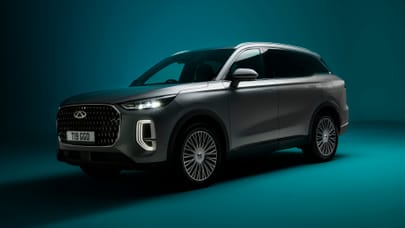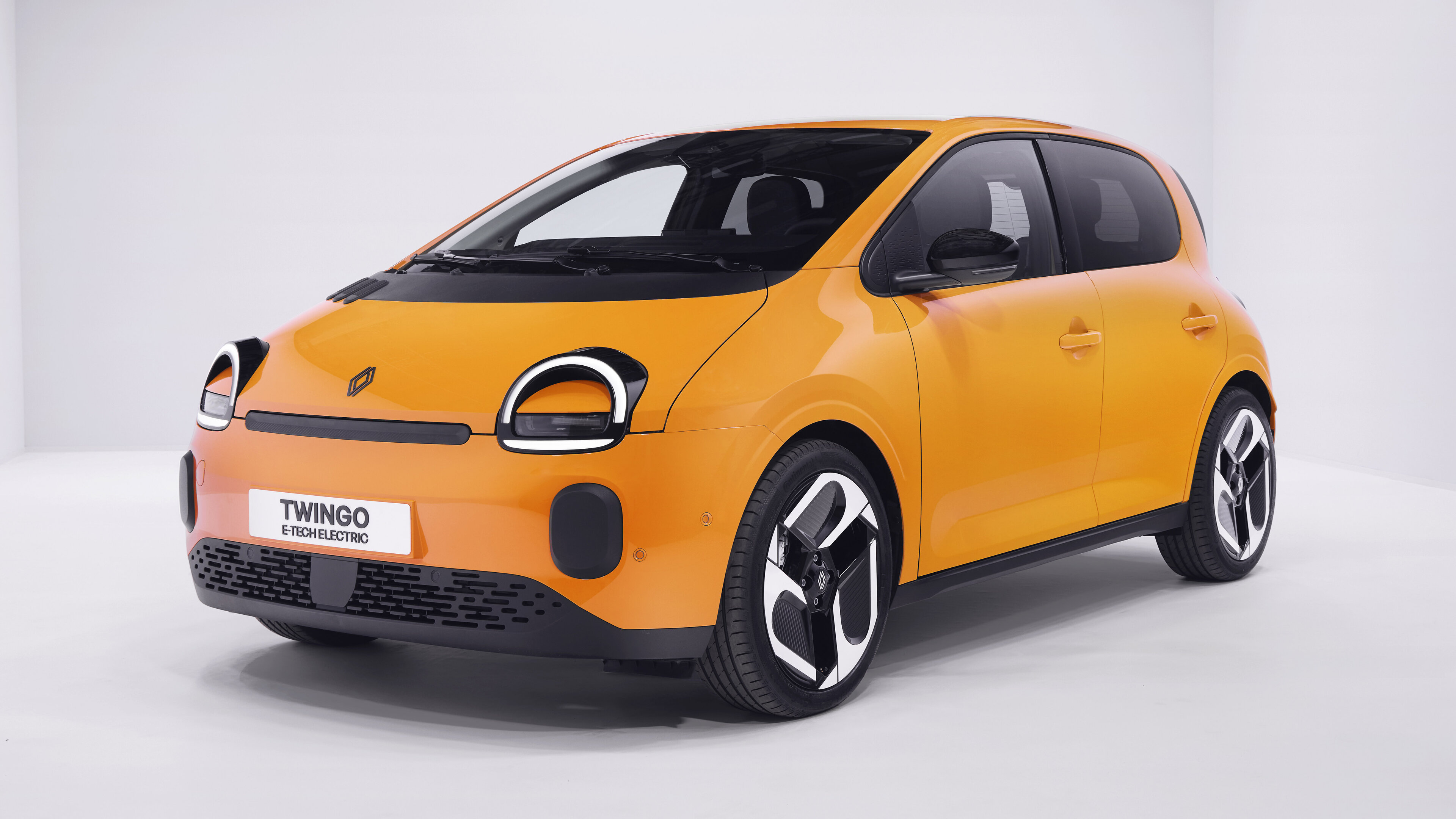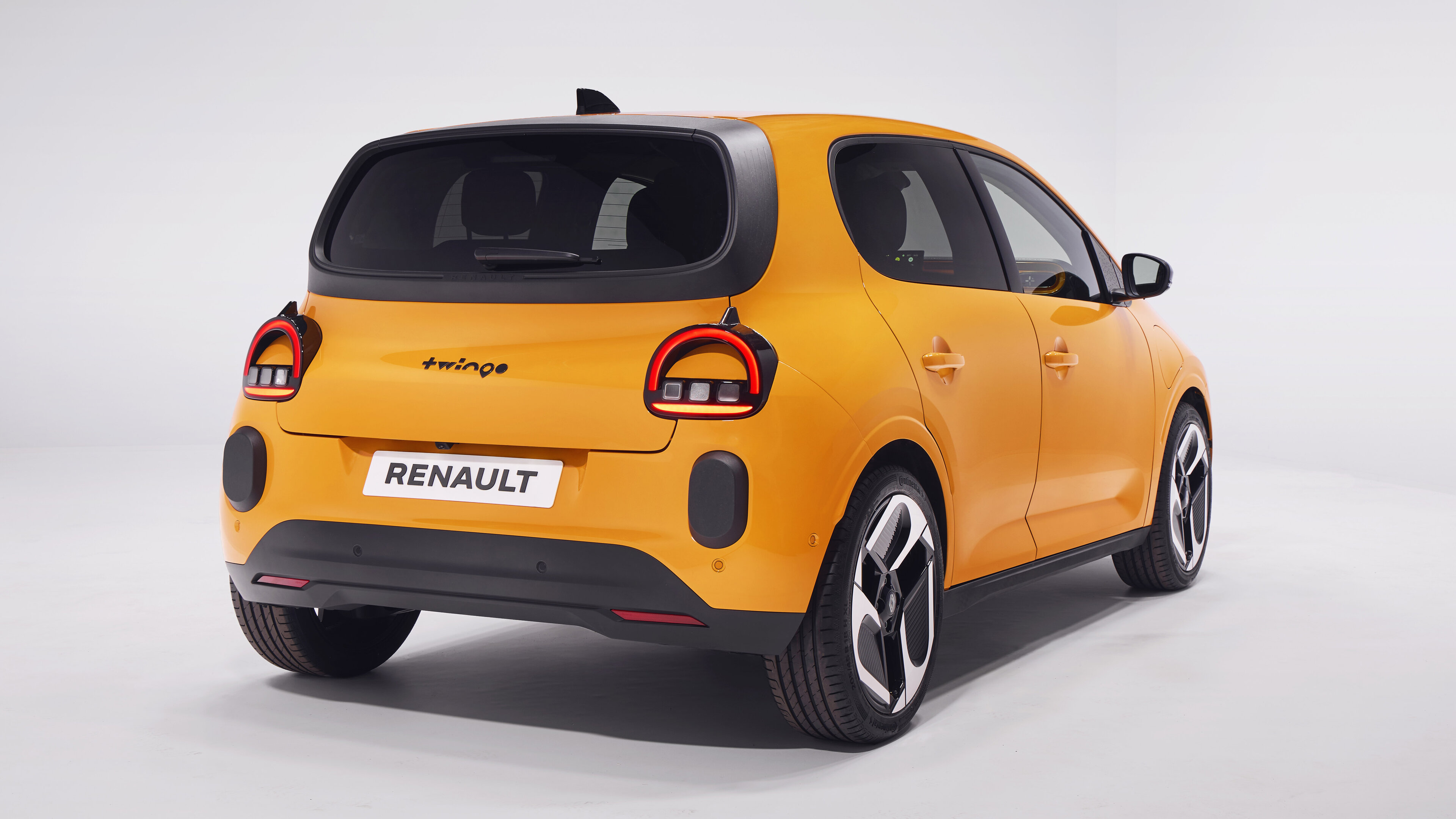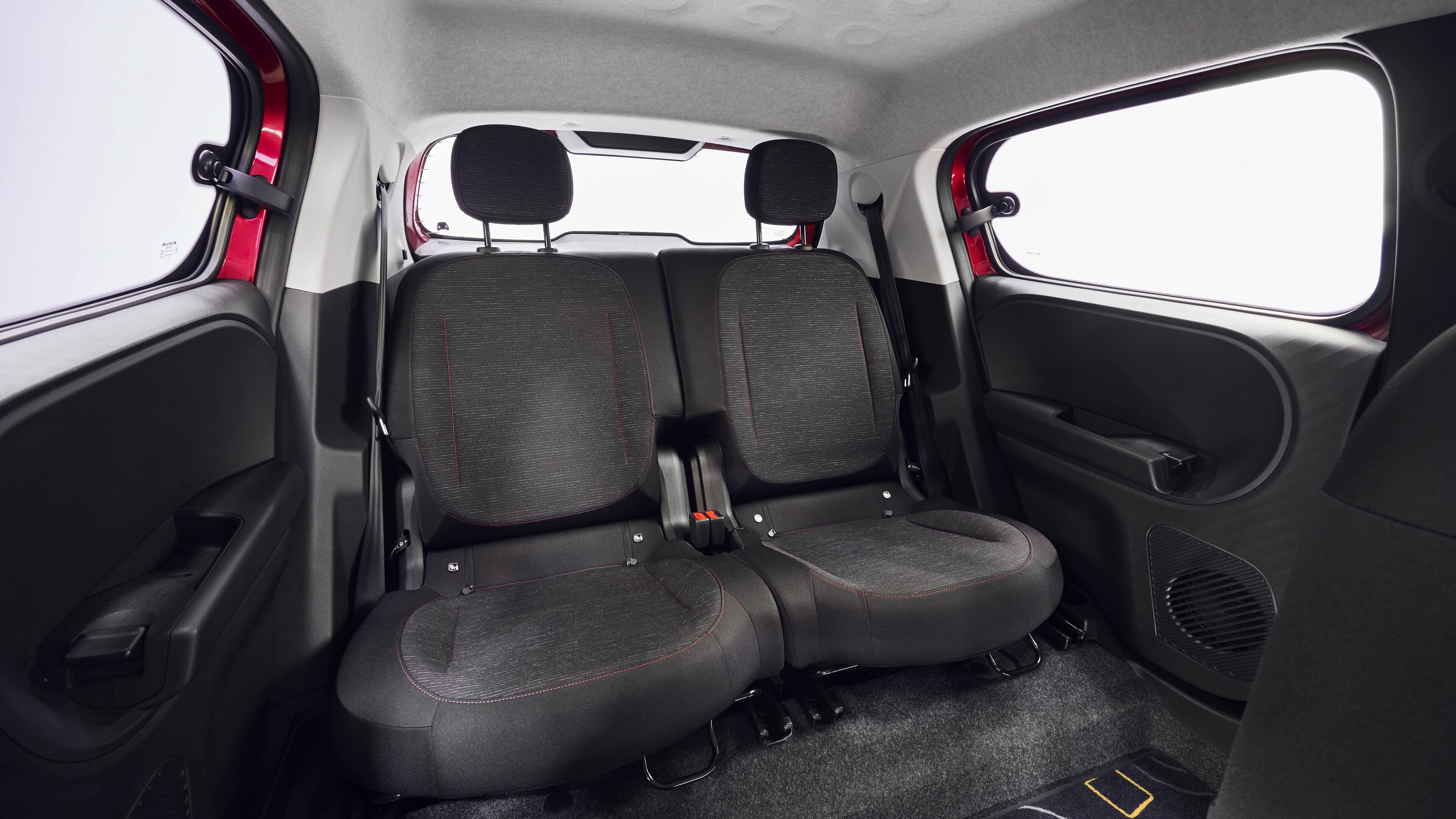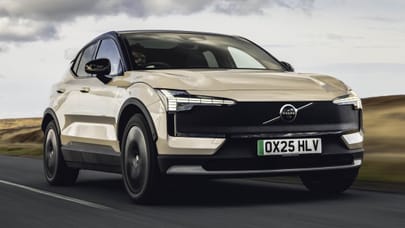
The Renault Twingo is back, and it’s cuter than ever
And it'll cost less than £20k in the UK
No Parisian-style parking required here, because the Renault Twingo is back… and it’s a properly dinky little city car.
Renault first announced a return for its mini Mini rival back in November 2023, and the production-spec car you see here hasn’t strayed too far from the concept. Of course, that means it’s also heavily inspired by the first-gen Twingo from the 1990s, with a fun-size one-box shape to maximise interior space, and a cheery face with what Renault describes as a ‘subtle smile’.
It's supremely cute. The lighting is now LED front and rear but still manages to create plenty of personality as it protrudes from the bodywork, and while the newly named Twingo E-Tech Electric is only 3.79m long in total, the wheelbase is 2.49m so there’s space for four proper doors. Four adults inside, too.
Renault has created a funky new “Twingo alphabet” for the badging round the back (which also appears on the roof lining and the floor mats inside) and we’re told that the shark fins on top of the rear lights improve aero. The rear window is a large oblong, which is a shape reflected in the grille openings up front and on the little plastic bumper protectors. Perhaps Parisian parking is on the cards after all…
Standard wheels will be 16in steelies with aero-spec plastic trims, but you’ll be able to upgrade to these hefty 18in alloys if you ain’t afraid of no kerbs. Like the new Renault 5, the Twingo will launch with some eye-catching colour options including green, red and yellow, and the whole look continues Renault’s retro revival form.
Heck, the new Twingo even features a little tribute to the three air intakes on the Mk1. You can’t actually lift the bonnet on this fourth-gen car, so those little bits of plastic now hide a small opening to top up the windscreen washer fluid. Neat.
“When I arrived at Renault in 2009, I got a lot of questions about the 4 and 5,” design boss Laurens van den Acker tells TG. “At the time I said I'm hired for the future, not for the past. And I believed that. But with these EV platforms it allows us to get close to the proportions of those days.
“Cars had their wheels pushed right into the corners. And with the EV platform, we can return to this. The motors are more compact, so you can have bigger wheels on the corners that turn more. If you put an internal combustion engine in this Twingo, you would have to add 100mm to the front end, and then you would make a caricature.
“But wait until you see it on the street, because of course you could describe it as a retro-futuristic car, but I would argue that it's not nostalgic. The proportions are perfect. The car looks like a little bonbon on the street, a little candy. The colours are magnificent.”
Top Gear
Newsletter
Thank you for subscribing to our newsletter. Look out for your regular round-up of news, reviews and offers in your inbox.
Get all the latest news, reviews and exclusives, direct to your inbox.
So yes, the new Twingo is electric only, and its powertrain is equally dinky to match the proportions. It deploys an LFP (Lithium Iron Phosphate) battery that gets a usable capacity of 27.5kWh. For context, the battery in a plug-in hybrid Range Rover Sport is 31.8kWh.
The Twingo is based on the same AmpR Small platform as the R5 and R4, but because it only weighs 1,200kg and hasn’t really been designed to leave the city limits, it only needs an 80bhp motor to hurry along the front wheels. You’ll never do it, but the 0-62mph sprint takes 12.1 seconds. Perhaps more pertinent is the 0-31mph time of 3.85 seconds. Sounds sprightly enough. Oh, and the turning circle is just 9.87m.
Range is quoted as 163 miles on the WLTP cycle, with Renault claiming the potential customer base averages just 22 miles per day. The LFP chemistry of the battery reduces reliance on critical metals like cobalt and nickel, while at the same time cutting the cost of the pack by around 20 per cent.
In Europe you’ll be able to buy a Twingo that doesn’t rapid charge. Standard cars will get 6.6kW AC charging to top up from 10 to 100 per cent in 4 hours and 15 minutes at a wallbox. An optional extra ups the AC charging to 11kW and adds the capability for 50kW DC charging. The latter means a 10 to 80 per cent top-up in 30 minutes. UK spec is yet to be confirmed, but we can’t see Renault attempting to sell it without DC charging on our shores. We’re an impatient bunch these days.
On the inside all trim levels get a 7in digital dial display and a 10in infotainment screen. We’re told there are “playful graphics and animations” for both, with a ‘welcome jingle’ that was developed in collaboration with composer and producer Jean-Michel Jarre. Right. Top spec cars get the impressive Google built-in system for maps and apps.
Thankfully there are still some proper buttons and rotary controls, while the hazard warning button on the dash is inspired by the bulbous one on the classic 90s Twingo. We say 90s, but the Mk1 remained in production in France until 2007, and it soldiered on in Colombia right up until 2012. Good grief.
Its makers claim that the interior of this new version “expresses the cheerful vibe and optimism inspired by this vehicle”, which is rather sweet. There are pops of body colour on the dash and doors, plus actual pop-out windows in the rear. The two seats back there slide forwards and backwards individually by up to 170mm, meaning boot space can stretch to as much as 360 litres with all four seats still in use. That’s only slightly less luggage space than you’ll find in a petrol-powered Volkswagen Golf, and almost a third bigger than the Golf eHybrid’s. Bravo.
Renault says that the city car segment now accounts for less than five per cent of the European market, but it also reckons there’s still genuine demand for small cars. “Motorists across Europe are still looking for compact, affordable vehicles designed for urban living or for use as a second car,” reads a press release.
Ah yes, affordability. Prices haven’t been confirmed just yet, but with its small footprint, cost-efficient battery and a dramatically reduced development time of just two years, Renault is promising that the Twingo will launch at under £20,000. And that’s excluding the government grant that should follow.
Of course, the original Twingo was never officially sold on our shores and only a handful of imports made it across the English Channel, but even so this #ThrowbackThursday version is likely to find fans in the UK. After all, there’s a whole lot of nostalgia right now for the 1990s. Orders should open here towards the end of 2026.
Trending this week
- Long Term Review
How efficient is the hybrid Dacia Bigster?
- Top Gear magazine
Here are 40 brilliant cars from 400 issues of Top Gear magazine






